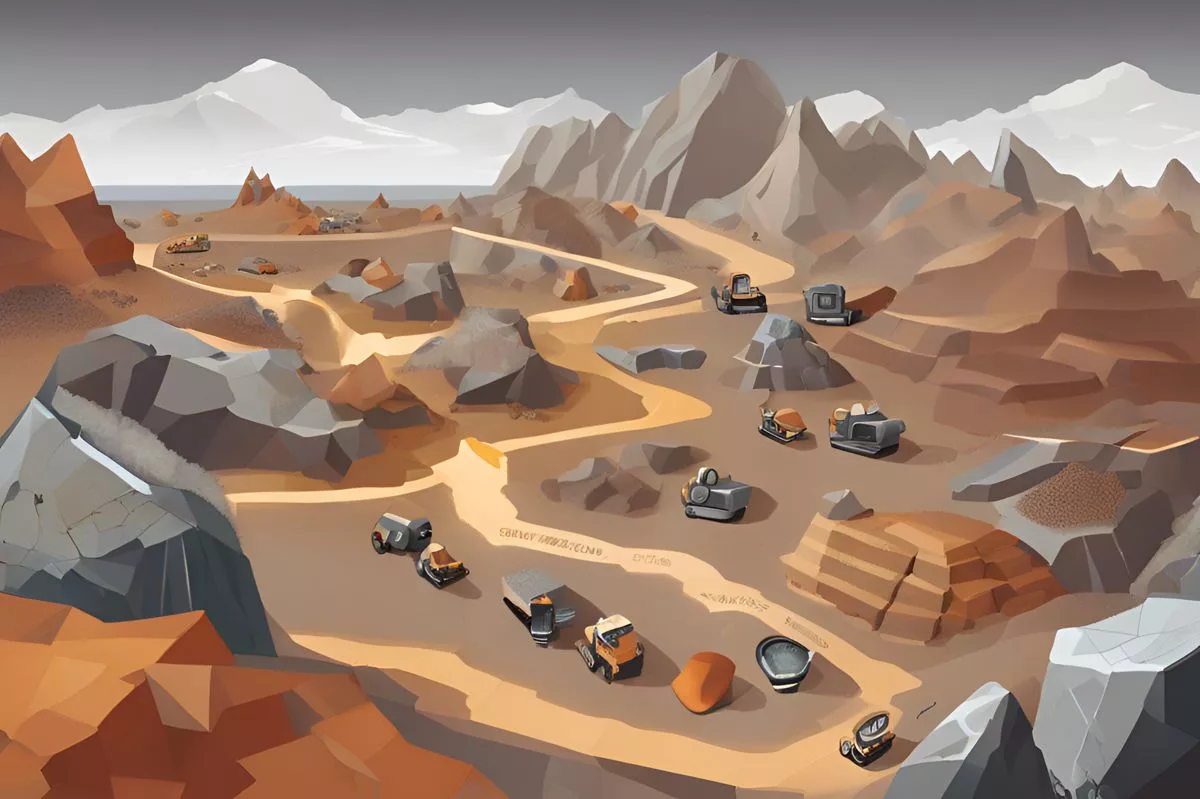Cape Town is gearing up for an exciting change with its Local Spatial Development Framework (LSDF) for the Central Business District (CBD). This plan aims to create a lively, sustainable area where people can live, work, and play, all while respecting the city’s rich history. The LSDF encourages community involvement, inviting residents to share their thoughts and ideas, especially during a special event on October 10th, 2024. The focus is on making the CBD more walkable, accessible, and full of diverse spaces, ensuring that everyone can enjoy the cultural and economic opportunities the city has to offer. With input from its people, Cape Town is ready to build a bright future that honors its past.
What is Cape Town’s Local Spatial Development Framework (LSDF)?
Cape Town’s LSDF is a comprehensive plan aimed at transforming the Central Business District (CBD) into a vibrant, sustainable area. It focuses on community engagement, mixed-use development, and preserving cultural heritage, ensuring the city’s future aligns with residents’ aspirations while promoting economic growth and inclusivity.
Planning for a Vibrant Urban Core
Cape Town is on the brink of a major transformation with the introduction of the Local Spatial Development Framework (LSDF) for its Central Business District (CBD). This forward-thinking plan, now available for public input, acts as a detailed guide for the area’s future urban and economic advancement. The LSDF is a key component of the city’s broader vision to cultivate a more sustainable, inclusive, and dynamic urban environment.
A pivotal event, the public information day on October 10th, 2024, at the Central Library on Parade Street, presents an invaluable chance for citizens and stakeholders to engage directly with city planners. This gathering aims to boost community collaboration, a crucial factor in refining the LSDF. Attendees can participate in focus sessions for proposal presentations, explore an open exhibition showcasing draft proposals, and attend a comprehensive in-person presentation.
Alderman Eddie Andrews, in his capacity as the Deputy Mayor and Mayoral Committee Member for Spatial Planning and Environment, underscores the vital role of public engagement. He asserts that input from Cape Town’s residents can greatly enhance the LSDF, ensuring it aligns with the aspirations of the community. This framework is designed to direct land use, development strategies, and investments in public infrastructure, critical elements in shaping a resilient CBD for current and future generations.
Precincts and Planning
The draft LSDF divides the CBD into eight distinct precincts: De Waterkant, Convention District, Mid-City, Company Gardens, East Foreshore, Cape Town Station, East City, and Lower Gardens. Each precinct is subject to specific development guidelines that tackle issues such as urban form, height management, and character assessments. This detailed approach aims to preserve Cape Town’s rich cultural and historical identity, while also encouraging contemporary growth.
Cape Town’s CBD, nestled between the iconic Table Mountain and the Atlantic Ocean, is a mosaic of cultural heritage and economic potential. The LSDF’s spatial vision seeks to amplify these existing qualities. The framework emphasizes creating pedestrian-friendly spaces, optimizing heritage areas, and boosting affordable housing through a public land initiative. With a focus on mixed-use development, the city aims to establish a dynamic urban area that blends commercial, retail, and residential opportunities.
A cornerstone of the LSDF’s strategy is mixed-use development. By integrating diverse urban functions, the framework aspires to cultivate a more vibrant, equitable, and economically robust CBD. This strategy mirrors global urban planning trends that highlight walkability, accessibility, and community-focused spaces, envisioning a CBD that serves as a living, inclusive part of the city for both residents and visitors.
Engaging the Community
Public feedback is crucial in shaping the LSDF’s final form. Cape Town encourages contributions through its website or at the public information day until October 31st, 2024. This participatory process ensures the framework reflects the community’s varied perspectives, enhancing the planning process and reinforcing the city’s dedication to inclusive development.
In the broader realm of urban planning, Cape Town’s LSDF resonates with the New Urbanism movement, which emerged as a reaction to urban sprawl. The LSDF emphasizes walkable neighborhoods, diverse housing options, and community-centric spaces, similar to New Urbanism. Such principles are vital for fostering a sense of belonging and active participation among residents.
The LSDF also draws from the Smart Growth movement, prioritizing sustainable development and efficient resource use. By optimizing land use and promoting public transportation, the framework aims to lower the city’s carbon footprint and bolster its resilience to climate change. This approach positions Cape Town as a leader in environmentally conscious urban development.
Integrating Culture and Connectivity
Cultural and artistic considerations play a significant role in the LSDF. It acknowledges the importance of safeguarding Cape Town’s cultural heritage, ensuring that new developments complement rather than overshadow the city’s historical narrative. By weaving cultural and artistic elements into urban design, the LSDF seeks to enrich public spaces and celebrate the city’s diverse heritage.
The LSDF’s focus on transportation and mobility aligns with the Transit-Oriented Development (TOD) model. By prioritizing pedestrian access and improving public transport infrastructure, the framework aims to create a more interconnected and accessible CBD. This strategy not only enhances the quality of urban life but also supports economic growth by facilitating the efficient movement of people and goods.
Cape Town’s LSDF marks a significant step in reimagining the city’s urban landscape. Through strategic planning and community engagement, the framework lays the groundwork for a thriving, inclusive, and sustainable CBD. As the city embarks on this transformative journey, the input from its residents will be essential in shaping a future that honors the past while embracing new potentials.
Call to Participate
The City of Cape Town invites everyone interested in the CBD’s future to engage in this process. Whether attending the public information day, submitting comments online, or joining community discussions, each contribution holds value in the city’s evolution. The LSDF represents more than just a planning document; it embodies a shared vision for a brighter, more inclusive Cape Town.
FAQ: Transforming Cape Town’s CBD
What is Cape Town’s Local Spatial Development Framework (LSDF)?
The LSDF is a comprehensive plan designed to transform Cape Town’s Central Business District (CBD) into a vibrant, sustainable area. It emphasizes community engagement, mixed-use development, and the preservation of cultural heritage, ensuring future developments align with residents’ aspirations while promoting inclusivity and economic growth.
When is the public information day for the LSDF?
The public information day is scheduled for October 10th, 2024, at the Central Library on Parade Street. This event is an opportunity for citizens and stakeholders to engage with city planners, participate in focus sessions, and explore draft proposals for the LSDF.
How can residents contribute to the LSDF?
Residents can contribute their ideas and feedback through the city’s website or by attending the public information day. The feedback period is open until October 31st, 2024. Community input is crucial for shaping the final framework to reflect diverse perspectives and enhance the planning process.
What are the main goals of the LSDF?
The LSDF aims to create a lively, walkable, and accessible CBD that offers diverse spaces for living, working, and playing. It focuses on mixed-use development, preserving cultural heritage, and enhancing public infrastructure while fostering community involvement and economic opportunities.
How does the LSDF incorporate cultural and artistic elements?
The LSDF places great importance on safeguarding Cape Town’s cultural heritage. It aims to ensure that new developments complement the historical narrative of the city, integrating cultural and artistic elements into urban design to enrich public spaces and celebrate the city’s diverse identity.
What planning principles does the LSDF follow?
The LSDF reflects principles from the New Urbanism and Smart Growth movements. It emphasizes walkable neighborhoods, diverse housing options, sustainable development, and efficient resource use. The framework also prioritizes transportation and mobility, supporting public transport improvements to create a more interconnected and accessible CBD.












